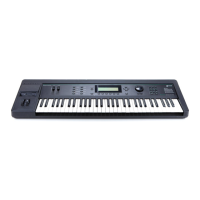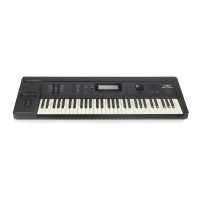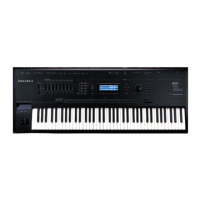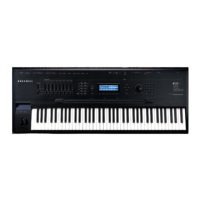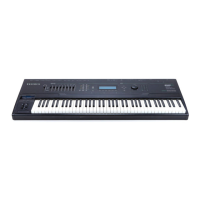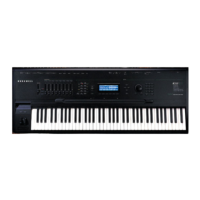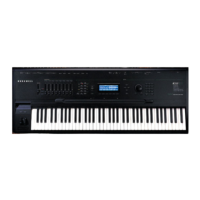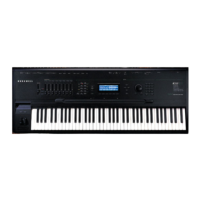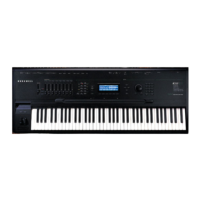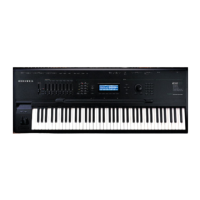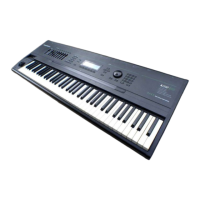2-30
Sampling with the K2000
Reading Samples
Press the Load soft button, and you’ll see a page prompting you to select something to load
(we’ll call them objects, since different manufacturers give then different names). The top line of
the display will tell you the number of objects available of the currently selected type, as well as
the index number of the currently selected object. You can select any object in the list by typing
its index number on the alphanumeric buttonpad and pressing Enter. The next step is to use the
soft buttons to select the type of object to be loaded.
Once you’ve selected the type of object to load, press the OK soft button, and the bank dialog
appears, enabling you to select the bank into which the object(s) will be loaded. When you’ve
selected a bank, press the OK soft button, and the loading process begins. At the center of the
display you’ll see the object currently being loaded. The top line of the display gradually fills
with asterisks to indicate the status of the current object. The bottom line tells you the total
number of kilobytes to be loaded.
The K2000 creates layers as necessary when you load objects. These layers have the same
settings as Layer 1 of Program 199.
When the load is complete, the Disk-mode page reappears. You can now proceed with another
load, or go to any other mode. If you exit Disk mode, the K2000 remembers the file that you
selected most recently. When you return to Disk mode, this file will be selected.
Once you’ve loaded a sample or program file, you can save it as a Kurzweil object. You’ll find it
it can be loaded and backed up much faster as a Kurzweil object than in its original format.
Akai
The first page to appear is the page for loading files. The soft buttons name the operations:
HDrive, Volume, and File on the left, and OK and Cancel on the right.
The hierarchy of objects is shown by the three soft buttons on the left. The display prompts you:
File|to|load: The HDrive button selects the partition on the currently selected disk. The
Volume button selects volumes within the currently selected partition. The file button selects an
individual sample file from within a volume. The OK button, toward the right, executes the
displayed function: partition selection, or loading a volume or file. The Cancel button returns
you to the Disk-mode page.
When you press the HDrive button, the center of the display’s top line shows the currently
selected volume in the currently selected partition. The prompt at the center of the display will
read: HD|Partition. The list of available partitions will appear following the prompt. They’re
usually named A through F. Use the cursor buttons or numeric entry to highlight a different
partition. Pressing the OK soft button selects the highlighted partition.
Pressing the Volume button changes the prompt to Volume|to|load: The list of available
volumes in the current partition appears. The center of the top line shows the current partition.
The Layer buttons scroll through the list of available partitions. Use the cursor buttons or
numeric entry to select a different volume. Pressing the OK button loads the entire highlighted
volume, unless the volume is larger than your available sample RAM, in which case, the K2000
will load as many files as will fit.
The Bank dialog will appear, enabling you to select the bank that will receive the volume. Press
OK again, and you’ll be prompted to press either the Progs soft button, which will load
program information in addition to the samples, or the Samps soft button, which will load only
the sample information. Programs are identified by the suffix .p, and are stored in program
RAM. Samples have the suffix .s, and are stored in sample RAM. You can press Cancel to return
to the Disk-mode page without loading the volume.
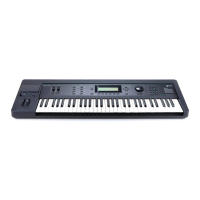
